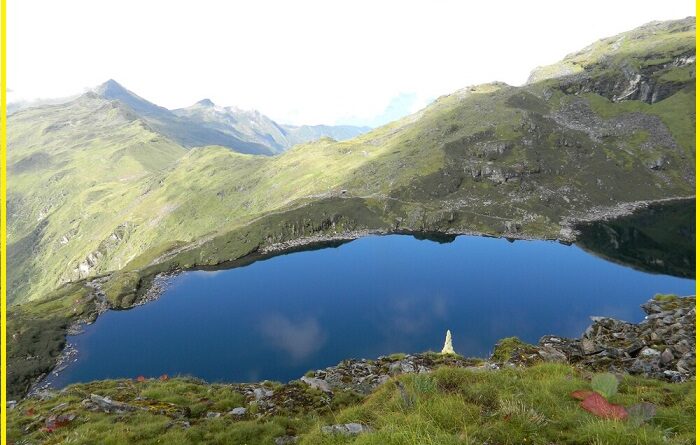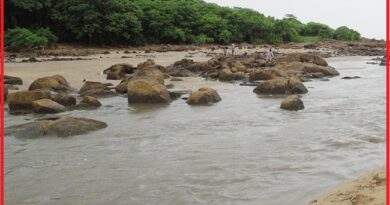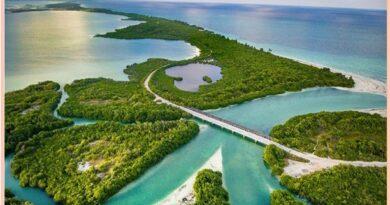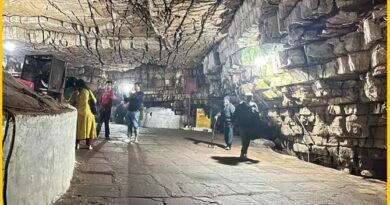Why KHANGCHENDZONGA NATIONAL PARK is a Must visit Destination
Khangchendzonga National Park
Khangchendzonga National Park is a protected area located in the Indian state of Sikkim, and it is one of the most scenic and biologically diverse regions in the Eastern Himalayas. The park covers an area of 2,620 square Kilometers and includes the mountain peaks of Khangchendzonga, which is the Third highest mountain in the world.
The park is home to a wide range of flora and fauna. Some of the notable wildlife found in the park include the snow leopard, Himalayan black bear, red panda, musk deer, and blue sheep. The park also has a rich cultural heritage, with several indigenous communities residing in the area. Visitors to Khangchendzonga National Park can enjoy a range of outdoor activities, such as trekking, camping, and birdwatching. There are also several scenic spots within the park, including high-altitude lakes, waterfalls, and glaciers.
Khangchendzonga National Park has been declared a UNESCO World Heritage Site in 2016 in recognition of its outstanding natural and cultural significance. The park is a must-visit destination for nature enthusiasts, adventure seekers, and anyone who wants to experience the beauty and diversity of the Eastern Himalayas.
Where is Khangchendzonga national park
Khangchendzonga National Park is located in the Indian state of Sikkim and includes the Khangchendzonga mountain range, which is the third highest mountain range in the world. The park borders Nepal to the west and Bhutan to the east. The nearest town to the park is Gangtok, which is the capital of Sikkim, and is about 24 kilometers away from the park’s main entrance.

Animal Khangchendzonga national park
Khangchendzonga National Park is home to a wide range of animal species, including some rare and endangered ones. Some of the notable animals found in the park are- Snow leopard is a endangered big cat is found in the high-altitude regions of the park. Himalayan black bear is a subspecies of the Asian black bear, this bear is found in the forests of the park. Red panda is a cute and endangered animal is found in the high-altitude regions of the park. Musk deer is a small deer, known for its musk gland, which is used in perfumes and traditional medicine. It is found in the forests of the park. Blue sheep is also known as bharal, this wild sheep is found in the high-altitude regions of the park. Tibetan wolf is found in the high-altitude regions of the park, and is an important predator in the ecosystem. Himalayan tahr is a wild goat is found in the high-altitude regions of the park, and is known for its impressive horns. Serow is a goat-like antelope is found in the forests of the park, and is an important prey species for predators like the snow leopard and Himalayan black bear.
Also read- These are the Fabulous Tourist Attraction in Sikkim on a Tight Budget
Tourist Places in Sikkim
Sikkim is a beautiful state in northeast India that offers a wide range of tourist attractions, including stunning natural landscapes, vibrant culture, and rich history. The Khangchendzonga National Park have some of the must-visit attractions in the park are-
Kanchenjunga Base Camp Trek
The Kanchenjunga Base Camp Trek is a popular trekking route in Sikkim that takes you to the base camp of Mount Kanchenjunga, the third highest peak in the world. The trek is considered one of the most beautiful and challenging treks in the Himalayas, offering stunning views of the mountain range and the surrounding landscape. The trek follows a circular route that passes through remote villages, dense forests, and high-altitude mountain passes. Some of the notable landmarks on the trek include the villages of Tshoka, Dzongri, and Goecha La.
Goechala Trek
The Goechala Trek is a popular trekking route in Sikkim that takes you to the base of the majestic Mount Kanchenjunga, the third highest peak in the world. The trek offers stunning views of the mountain range and the surrounding landscapes, as well as the opportunity to experience the local culture and wildlife. The trek follows a circular route that passes through remote villages, dense forests, and high-altitude mountain passes. Some of the notable landmarks on the trek include the villages of Tshoka, Dzongri, and the Goechala pass.
Yumthang Valley
Yumthang Valley is a picturesque valley located in North Sikkim, at an altitude of about 3,500 meters above sea level. Also known as the ‘Valley of Flowers’, it is one of the most beautiful valleys in Sikkim, famous for its stunning landscape and natural beauty. Yumthang Valley is known for its natural hot springs, which are believed to have medicinal properties. Visitors can take a dip in the hot springs and enjoy the therapeutic benefits. The valley is also a popular spot for camping and hiking, with several scenic trails that offer breathtaking views of the surrounding mountains.

Khecheopalri Lake
Khecheopalri Lake is a sacred lake located in the West Sikkim district and is also known as the ‘Wish Fulfilling Lake’ and is considered one of the holiest lakes in Sikkim by both Buddhists and Hindus. Here’s what you need to know about Khecheopalri Lake. Khecheopalri Lake is considered to be a sacred site and is visited by pilgrims from all over India and the world. The lake is surrounded by prayer flags and small shrines, and visitors are required to remove their shoes and be respectful while visiting.
Yuksom
Yuksom is a small town located in the West Sikkim district is known for its historical significance. It is also the starting point for several popular treks, including the Kanchenjunga Base Camp Trek and the Goechala Trek. Yuksom is a popular destination for trekkers, with several popular treks starting from the town. Visitors can also explore the town’s historical monuments, including the Dubdi Monastery and the Norbugang Chorten, which is a stupa built to commemorate the first coronation of the Chogyal. Yuksom is also a popular destination for birdwatching and offers several scenic hiking trails.
Pelling
Pelling is a popular tourist destination located in the West Sikkim district, situated at an altitude of 2,150 meters above sea level and offers breathtaking views of the Kanchenjunga mountain range. Pelling is known for its scenic beauty, cultural heritage, and adventure sports.
Some of the popular tourist attractions in Pelling include the Pemayangtse Monastery, Khecheopalri Lake, Rabdentse Ruins, Singshore Bridge, and the Changey Waterfall. Adventure enthusiasts can indulge in trekking, mountain biking, and rock climbing in and around Pelling. Pelling is well-connected by road to major cities in Sikkim and West Bengal.

How to reach Khangchendzonga national park
The nearest airport to Khangchendzonga National Park is Bagdogra Airport in Siliguri, West Bengal. From there, you can take a taxi or bus to Gangtok, the capital of Sikkim, and then to the park. The nearest major railway station is New Jalpaiguri in Siliguri, which is well-connected to major cities in India. The best time to visit the park is between March and May, or from September to December when the weather is pleasant and the skies are clear.
Gangtok to Khangchendzonga National park- Gangtok, the capital city of Sikkim, is the closest major city to Khangchendzonga National Park. The park is located at a distance of about 135 kilometers from Gangtok, and can be reached by various modes of transportation. State-run buses and private buses are available from Gangtok to Yuksom, a small town near the park. From Yuksom, you can hire a taxi or trek to reach the park. The bus ride takes about 7-8 hours. The most convenient way to reach the park from Gangtok is by hiring a taxi. Taxis are easily available in Gangtok, and the ride takes about 5-6 hours depending on traffic and road conditions.



